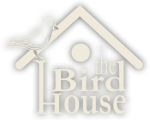Summer is at its peak, but the start of “fall migration” is at hand. Southbound shorebirds are already moving through our area, as other species finish raising their young in the fields, woods, and marshes, and begin dispersing. On average, 174 species are seen.
Migrating shorebirds begin to pass in increasing numbers, pausing on beaches, piers and mudflats before heading south. Semipalmated Plover, Greater and Lesser Yellowlegs, Ruddy Turnstone, Sanderling, Short-billed Dowitcher, and Least, Semipalmated, Western, Pectoral and Stilt Sandpiper are usually spotted in July. Whimbrel and Wilson’s Phalarope are also possible. Caspian Tern will be seen in increasing numbers, peaking in August.
Mudflats are usually still in short supply, so Ontario Beach and the Charlotte and Summerville piers become the best spots in our immediate area. However, Goose Pond and other mudflats at Iroquois National Wildlife Refuge usually attract the largest numbers of shorebirds this time of year.
On the ponds, with young birds fledged, herons, bitterns, rails and ducks become more noticeable now on bays, ponds, creeks and marshes. Look in any of the lakefront ponds – Braddock and Irondequoit Bays and adjoining marshes. Both Montezuma and Iroquois National Wildlife Refuges are outstanding areas for viewing pond and marsh birds, and both host small populations of Black Tern.
In the woods, take advantage of unique local habitats. Look at Letchworth State Park for warblers, Turkey Vulture, grouse and turkey, and Norway Road for more warblers, vireos and Veery.
The west lakeshore in Parma, Hamlin, and points farther west are great places to continue to search for Grasshopper and Henslow’s Sparrow and Upland Sandpiper in suitable grassy fields.
Huge flocks of Bank Swallow gather near ponds and the lakeshore prior to departure; their numbers peak in late July or very early August.
In the yard, American Goldfinch and Cedar Waxwing do not begin nesting until this time of year. You can still attract Ruby-throated Hummingbird to coral bells, petunias and other plants that bloom through the summer. Keep the bird bath full; mid-to-late summer dry spells can drastically reduce drinking supplies in the wild.



